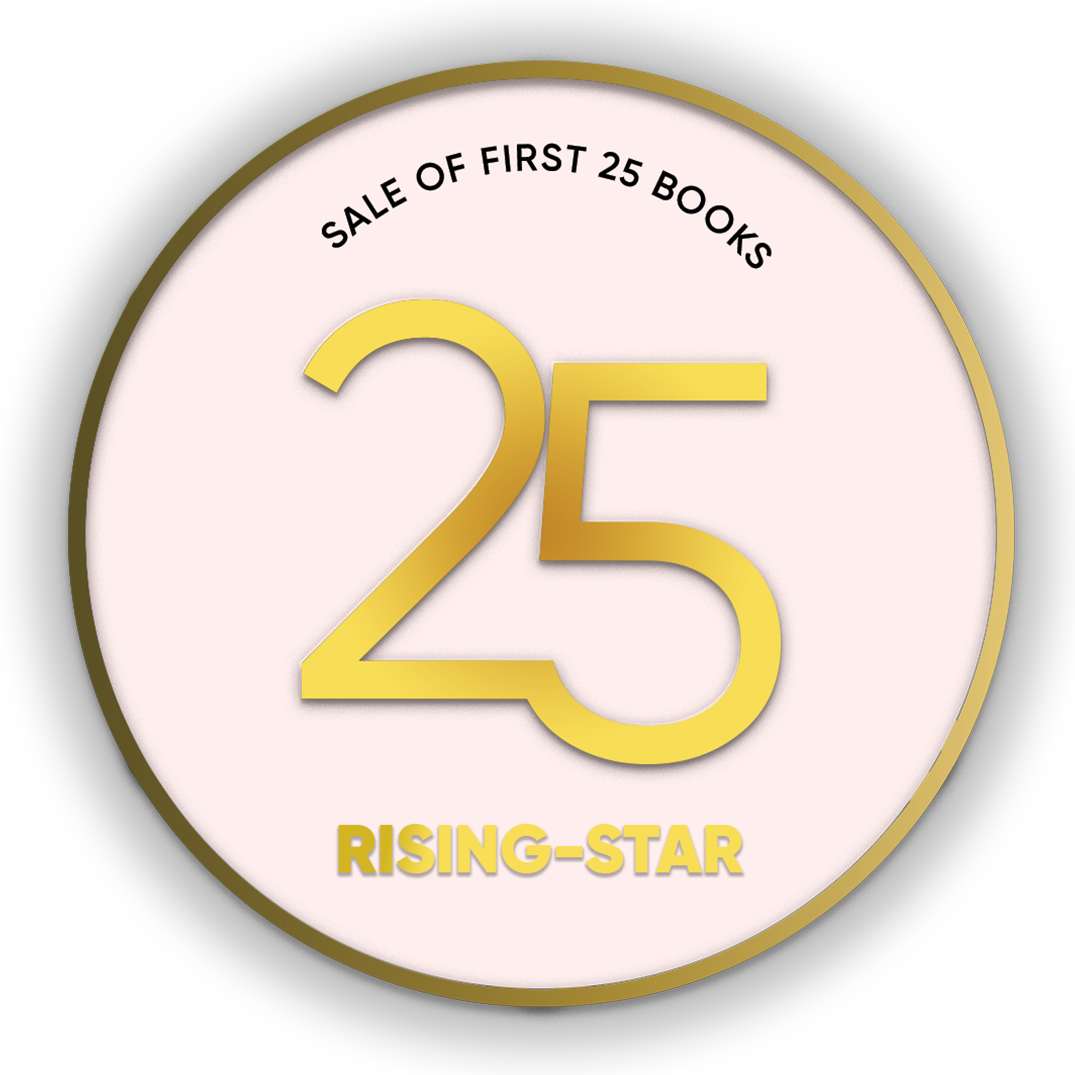
- Discover books
- For Writers
-
For Writers
-
Indie Author Championship
-
Challenges
Writing Contests
- Get Started

"It was a wonderful experience interacting with you and appreciate the way you have planned and executed the whole publication process within the agreed timelines.”
Subrat SaurabhAuthor of Kuch Woh Pal -
Crop your profile image

Computational Intelligence
Books by Madiajagan, Shiva Shankar Reddy, Manjunath, Pavithra
Computational Intelligence comprises concepts, paradigms, algorithms, and implementations of systems that are supposed to exhibit intelligent behavior in complex environments. It relies heavily on sub-symbolic, predominantly nature-analog or at least nature-inspired methods. These methods have the advantage that they tolerate incomplete, imprecise and uncertain knowledge and thus also facilitate finding solutions that are approximatively, manageable and robust
Computational Intelligence comprises concepts, paradigms, algorithms, and implementations of systems that are supposed to exhibit intelligent behavior in complex environments. It relies heavily on sub-symbolic, predominantly nature-analog or at least nature-inspired methods. These methods have the advantage that they tolerate incomplete, imprecise and uncertain knowledge and thus also facilitate finding solutions that are approximatively, manageable and robust at the same time. The choice of topics in this book reflects the most important fields in the area of computational intelligence. Classical fields such as artificial neural networks, fuzzy systems, and evolutionary algorithms are described in considerable detail. However, methods such as ant colony optimization and probabilistic graphical models are discussed as well, although a complete coverage of all approaches and developments is clearly impossible to achieve in a single volume. Rather than to strive for completeness, our goal is to give a methodical introduction to the area of Computational Intelligence. Hence we try not only to present fundamental concepts and their implementations, but also explain the theoretical background of proposed problem solutions.
Cybercrime and Digital Forensics
Books by Vijaya Lakshmi, Selvaraj, Rakesh, Ganesan
This book offers a comprehensive and integrative introduction to cybercrime. It is the first to connect the disparate literature on the various types of cybercrime, the investigation and detection of cybercrime and the role of digital information, and the wider role of technology as a facilitator for social relationships between deviants and criminals. It includes coverage of: key theoretical and methodological perspectives, computer hacking and digital piracy
This book offers a comprehensive and integrative introduction to cybercrime. It is the first to connect the disparate literature on the various types of cybercrime, the investigation and detection of cybercrime and the role of digital information, and the wider role of technology as a facilitator for social relationships between deviants and criminals. It includes coverage of: key theoretical and methodological perspectives, computer hacking and digital piracy, economic crime and online fraud, pornography and online sex crime, cyber-bulling and cyber-stalking, cyber-terrorism and extremism, digital forensic investigation and its legal context, cybercrime policy.
This book includes lively and engaging features, such as discussion questions, boxed examples of unique events and key figures in offending, quotes from interviews with active offenders and a full glossary of terms. It is supplemented by a companion website that includes further students exercises and instructor resources. This text is essential reading for courses on cybercrime, cyber-deviancy, digital forensics, cybercrime investigation and the sociology of technology.
Deep Learning in Computer Vision
Books by Anandan, Vanaja, Vijendra Babu, Naga Saranya
In the new century, the last analog bastion was taken. In a few years, sensors have become all digital. Archives will soon follow. As a consequence of this change in the basic conditions datasets will overflow. Computer vision will spin off a new branch to be called something like archive-based or semantic vision including a role for formal knowledge description in an ontology equipped with detectors. An alternative view is experience-based or cognitive vision
In the new century, the last analog bastion was taken. In a few years, sensors have become all digital. Archives will soon follow. As a consequence of this change in the basic conditions datasets will overflow. Computer vision will spin off a new branch to be called something like archive-based or semantic vision including a role for formal knowledge description in an ontology equipped with detectors. An alternative view is experience-based or cognitive vision. This is mostly a data-driven view on vision and includes the elementary laws of image formation.
This book recognizes that deep learning for computer vision is distinctively different from plain deep learning. Loads of data, spatial coherence, and the large variety of appearances, make computer vision a special challenge for the deep learning algorithms. Hence, the book does not waste itself on the complete spectrum of deep learning algorithms. Rather, this book is focused on machine learning for pictures.
Data Science using Python
Books by R. Mythili, Latha M , B Arunmozhi
This is a book about doing data science with Python, which immediately begs the question: what is data science? It's a surprisingly hard definition to nail down, especially given how ubiquitous the term has become. Vocal critics have variously dismissed the term as a superfluous label (after all, what science doesn't involve data?) or a simple buzzword that only exists to salt resumes and catch the eye of overzealous tech recruiters.
The book is not me
This is a book about doing data science with Python, which immediately begs the question: what is data science? It's a surprisingly hard definition to nail down, especially given how ubiquitous the term has become. Vocal critics have variously dismissed the term as a superfluous label (after all, what science doesn't involve data?) or a simple buzzword that only exists to salt resumes and catch the eye of overzealous tech recruiters.
The book is not meant to be an introduction to Python or to programming in general; I assume the reader has familiarity with the Python language, including defining functions, assigning variables, calling methods of objects, controlling the flow of a program, and other basic tasks. Instead it is meant to help Python users learn to use Python's data science stack–libraries such as IPython, NumPy, Pandas, Matplotlib, Scikit-Learn, and related tools–to effectively store, manipulate, and gain insight from data.
Data Science with Julia
Books by T. Judgi, N. Srinivasan, A. Pravin, T. Prem Jacob
This is a book for people who want to learn about the Julia language with a view to using it for data science. Some effort has gone into making this book suitable for someone who has familiarity with the R software and wants to learn about Julia. However, prior knowledge of R is not a requirement. While this book is not intended as a textbook for a course, some may find it a useful book to follow for a course that introduces statistics or data science students
This is a book for people who want to learn about the Julia language with a view to using it for data science. Some effort has gone into making this book suitable for someone who has familiarity with the R software and wants to learn about Julia. However, prior knowledge of R is not a requirement. While this book is not intended as a textbook for a course, some may find it a useful book to follow for a course that introduces statistics or data science students to Julia. It is our sincere hope that students, researchers and data scientists in general, who wish to learn Julia, will find this book beneficial.
This book is not intended as an exhaustive introduction to data science. In fact, this book is far from an exhaustive introduction to data science. There are many very good books that one can consult to learn about different aspects of data science, but this book is primarily about Julia. Nevertheless, several important topics in data science are covered. These include data visualization, supervised learning, and unsupervised learning. When discussing supervised learning, we place some focus on gradient boosting a machine learning technique because we have found this approach very effective in applications. However, for unsupervised learning, we take a more statistical approach and place some focus on the use of probabilistic principal components analysers and a mixture thereof.
Playing Smart: Artificial Intelligence
Books by S Venkata Achuta Rao, R. Kalaivani, Pavithra G, T. C. Manjunath
This is a book about games, intelligence, and artificial intelligence. In particular, it is a book about how these three things relate to each other. We explain how games help us understand what intelligence is and what artificial intelligence is, and how artificial intelligence helps us understand games. We also explain how artificial intelligence can help us make better games and how games can help us invent better artificial intelligence. Our whole career h
This is a book about games, intelligence, and artificial intelligence. In particular, it is a book about how these three things relate to each other. We explain how games help us understand what intelligence is and what artificial intelligence is, and how artificial intelligence helps us understand games. We also explain how artificial intelligence can help us make better games and how games can help us invent better artificial intelligence. Our whole career has been based on my conviction that games, intelligence, and artificial intelligence are deeply and multiply intertwined. We wrote this book to help you see these topics in the light of each other.
Principles of Cloud Computing
Books by S. Alagu, S. Dhanasekaran, S. Hariharasitaraman
There are several applications of cloud computing already being witnessed and experienced. As cloud is elastic, it can be used in places where varying load is one of the main characteristics. It can also be used where on-demand access is required. Similarly, because of its property of multitenancy, it can be used in places where several applications are to be operated. Cloud computing can also be used for data-intensive applications for data analytics and seve
There are several applications of cloud computing already being witnessed and experienced. As cloud is elastic, it can be used in places where varying load is one of the main characteristics. It can also be used where on-demand access is required. Similarly, because of its property of multitenancy, it can be used in places where several applications are to be operated. Cloud computing can also be used for data-intensive applications for data analytics and several data-related tasks.
This book will be a timely contribution to cloud computing, a field that is gaining momentum in all dimensions such as academia, research, and business. As cloud computing is recognized as one of the top five emerging technologies that will have a major impact on the quality of science and society over the next 20 years, its knowledge will help position our readers at the forefront of the field.
Python Crash Course
Books by K. Kavitha, N. Satheesh, D. Vijendra Babu
This book will ease you in gently by introducing you to the software you will need to create your programs: a command-line interface, which allows you to use Python in interactive mode, and a text editor for writing scripts—nothing more complicated than that. I will also show you where to go to find help and documentation, so you can decode the sometimes impenetrable jargon that seems to surround this, the geekiest of all technical disciplines. To begin
This book will ease you in gently by introducing you to the software you will need to create your programs: a command-line interface, which allows you to use Python in interactive mode, and a text editor for writing scripts—nothing more complicated than that. I will also show you where to go to find help and documentation, so you can decode the sometimes impenetrable jargon that seems to surround this, the geekiest of all technical disciplines. To begin with, you will need to make sure that you have a decently recent version of Python installed on your machine or follow the steps later in this chapter to install it (see “Choosing the Right Python Version” for a definition of decently recent). This chapter explains how to make sure that you have everything set up correctly and that you have suitable references at hand before you start your journey.

Are you sure you want to close this?
You might lose all unsaved changes.
Select from one of our global stores to continue
 India
India
 Malaysia
Malaysia
 Singapore
Singapore
 UAE
UAE
Warning Message
The items in your Cart will be deleted, click ok to proceed.


















